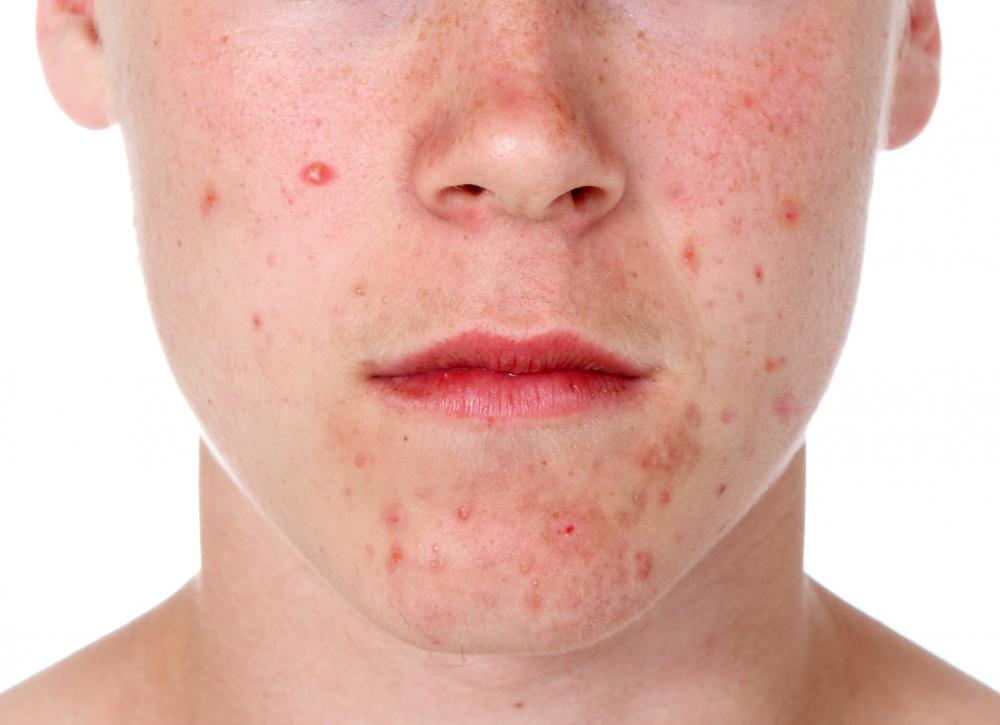At WiseGEEK, we're committed to delivering accurate, trustworthy information. Our expert-authored content is rigorously fact-checked and sourced from credible authorities. Discover how we uphold the highest standards in providing you with reliable knowledge.
What are the Most Common Uses for Topical Erythromycin?
Topical erythromycin is an antibiotic mainly used to control severe acne. It lessens acne-causing bacteria, which helps to manage acne and keep skin clear. It is available by prescription only and comes in several forms, including ointment, lotion, gel, and pads saturated in a solution to swab on the affected skin. Topical erythromycin may also be used to treat non-acne-related skin infections, and an ophthalmic version is used to treat eye infections.
This topical treatment for acne should be applied to the affected areas twice a day — usually once in the morning and again in the evening. It is important to apply topical erythromycin directly to an entire area and not just specifically to pimples, because it is more effective at managing the bacteria and preventing further acne when applied this way. Depending on how well this treatment manages a patient's acne, it can either be used on its own or together with another topical acne treatment.

Most people begin seeing a marked improvement in their acne and in the condition of their skin within six weeks of beginning to use topical erythromycin. A person who does not see any results after continuing this treatment for more than eight weeks should consult his or her doctor so a different treatment plan can be formed. Patience is key when using this acne treatment, and it is necessary to apply it every day to best manage acne and acne-causing bacteria. While topical erythromycin is not meant to be a cure for acne, it is extremely effective at acne prevention when following a doctor's instructions.

For the most part, topical erythromycin is well tolerated, but it is possible for side effects to occur when using this acne treatment. Potential side effects include redness, increased dryness, peeling of the skin, and itching. These side effects are not permanent in most cases and will gradually lessen as a person's skin adjusts to the new acne treatment.

Erythromycin ophthalmic ointment is also an antibiotic, but it is used as a treatment for eye infections, most notably pink eye or conjunctivitis. This eye ointment is designed to treat the bacteria causing the infection while also alleviating any signs of irritation, pain and itching. In a similar manner to topical erythromycin, a person should follow his or her doctor's dosing instructions explicitly when using erythromycin ophthalmic ointment to ensure that the bacteria causing the eye infection is effectively treated and so the infection does not return. If symptoms of the eye infection remain after a few days of using the ointment, a person should consult his or her doctor. Side effects of using this eye ointment are relatively rare, but increased redness or sensitivity may occur.
AS FEATURED ON:
AS FEATURED ON:















Discuss this Article
Post your comments